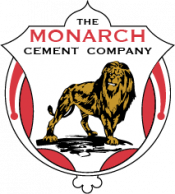Frequently Asked Questions
Masonry cement cannot be used in place of Portland cement. Specially formulated and manufactured, masonry cement is a blend of Portland cement and plasticizing materials – along with other property-enhancing admixtures – for use in brick, block and stone masonry construction. A mixture containing masonry cement will not set up and gain strength in the same way that Portland cement will.
One yard of concrete weighs approximately 3,800 lbs. First, figure how much concrete you will need. Even if you just need a half yard of concrete, that’s a lot of material to mix and place by hand. Also take into consideration the amount of time it will take to mix and place that concrete, which could lead to cold joints and finishing issues if the next batch takes a long time to mix and place. Concrete delivered by a ready-mix supplier will typically be more consistent and allow for quicker placement, and is usually more cost-effective. Bag mixes are great for small jobs, but the size of the project dictates when they should be used.
Everything affects the air in concrete, including slump, temperature, change in aggregate gradations, load size, water additions at the job site, other admixtures, mixing time, and SCMs—just to name a few. The only way to know is to test your air contents regularly. We live in an area where temperature can change dramatically from morning to afternoon. Even with all the other factors remaining constant, the amount of chemical used to achieve the target air could vary throughout the day.
ACI 301 Specification for Structural Concrete is one of the most referenced documents in job specifications. The rules (and documentation) for determining the required average strength can be found in this specification. Unfortunately, these are often misunderstood, rarely followed, and have changed somewhat in the last five to 10 years. Please contact us for specific advice for starting a documentation plan.
There really isn’t anything that can be done to normal Portland cement concrete to resist the damage caused by this type of heat. Making concrete out of a different type of cement is a possible alternative, but particular attention must be paid to aggregate selection, as some aggregates expand and contract differently with temperature.
In cold weather, it’s important to make sure the concrete has enough time to gain adequate strength to resist damage. ACI 306R‑10 Guide to Cold Weather Concrete provides guidance on this, including some charts that were discussed.


